How to use ChatGPT like a Pro: 100+ ChatGPT Examples in Schools (With Prompts You Can Copy)
data-offset= "0"
style=""
>
Table Of Contents
- Introduction
- ChatGPT examples for Lesson Planning:
- ChatGPT examples for Research, Brainstorming, and Information Gathering:
- ChatGPT examples for Classroom Instruction and Support:
- ChatGPT examples for Personalized Learning and Differentiation:
- ChatGPT examples for Student Engagement and Collaboration:
- ChatGPT examples for Gamification:
- ChatGPT examples for Reviews and Assessments:
- ChatGPT examples for Administrative, Guidance, and Support:
- ChatGPT examples for Presentation and Public Speaking:
- ChatGPT examples for Homework Assisting:
- ChatGPT examples for Revision and Exam Preparation:
- ChatGPT examples for Different Subjects:
- Art and Design
- Computer Science and IT
- Environmental Studies
- Geography
- History
- Language and Creative Writing
- Math
- Music
- Philosophy and Ethics
- Science
- On Things Schools Don’t (Directly) Teach You
- Final Thoughts
Introduction
ChatGPT, the chatbot sensation that took the internet by storm when it was launched by OpenAI in November 2022, has become a household name. Its popularity owes thanks to its Natural Language Processing (NLP) capabilities which enable it to provide human-like responses and information to a wide range of inputs.
Yet, despite its widespread popularity, the true breadth of ChatGPT’s capabilities is often underestimated. ChatGPT’s potential goes far beyond completing basic tasks like generating text or answering questions. The reality is that ChatGPT is a powerhouse, capable of revolutionizing various fields and industries.
We will focus on ChatGPT’s capabilities in the field of education, over 100 of them in this post, with practical prompts you can copy and use immediately. From personalized learning and differentiation to brainstorming, coding assistance, research support, and even counseling, ChatGPT is a game-changer in the classroom. If you’re looking for some mind-blowing surprises, don’t miss out on examples #10, 15, 58, and 95 – we guarantee they will leave you speechless.
ChatGPT examples for Lesson Planning:
Let’s be honest: lesson planning takes up a tremendous amount of time and often takes the joys of teaching. With ChatGPT, you can reclaim both joy in teaching and precious time to focus on what matters most – teaching itself.
1. ChatGPT can research and gather relevant content and links for your lessons without the need for you to do endless web research
ChatGPT prompt to use: “Provide me with reliable sources and information on the topic of [topic] for my upcoming [subject] lesson.”

2. ChatGPT can structure a detailed lesson plan
ChatGPT prompt to use: “Can you provide me with a lesson plan template or a suggested outline for teaching the topic of [topic] to [grade level] students?”
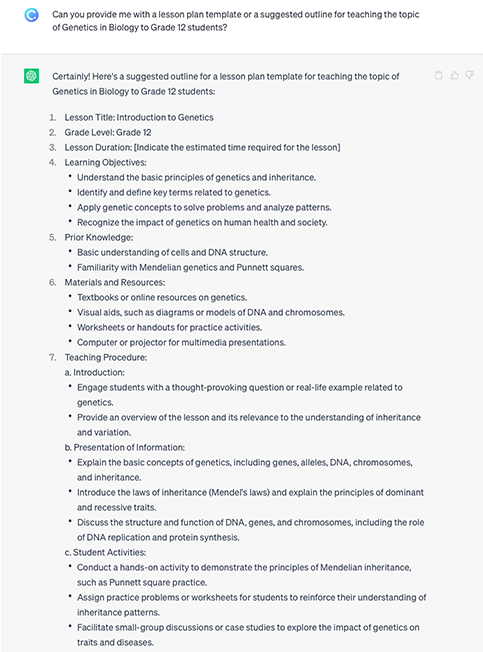
3. ChatGPT can offer ideas for technology tools and platforms
ChatGPT prompt to use: “Can you recommend any educational apps or tools that are suitable with teaching [grade level and subject] on [topic]?

4. Generate discussion and lesson prompts with ChatGPT
ChatGPT prompt to use: “I need some thought-provoking discussion prompts for my lesson on [topic].”

5. Create instant worksheets and exercises with ChatGPT
ChatGPT prompt to use: “Create a worksheet on [topic] with a list of [number] exercises related to the [learning objectives].”

ChatGPT examples for Research, Brainstorming, and Information Gathering:
And now onto one of the things ChatGPT does best – giving you endless ideas!
6. Ideas generation with ChatGPT (on almost any topic!)
ChatGPT prompt to use: “I am working on [project/problem]. Can you help me generate some innovative ideas and potential approaches to address this project/problem?”
You can also get ChatGPT to generate classroom decoration ideas:

7. ChatGPT can offer guidance on effective research methodologies and data collection techniques
ChatGPT prompt to use: “I am teaching my students to research on [topic]. Can you suggest some key approaches, research methods and data collection techniques for my students?”

8. ChatGPT can generate hypothetical scenarios to fuel the brainstorming process.
ChatGPT prompt to use: “I am teaching the [topic] in [subject]. Can you generate a hypothetical scenario for [topic/issue] and provide details and potential implications for the topic?”

9. Concept exploration with ChatGPT
ChatGPT prompt to use: “I’m introducing the [concept] in my [subject] class. Can you provide additional insights, examples, and real-world applications to help students explore and grasp the concept more thoroughly?”

10. Mind-mapping with ChatGPT to reinforce learning. The result is pretty amazing!

Bonus: You can also import the code ChatGPT generated into mind mapping software like MindMeister, XMind, or MindNode to turn what ChatGPT generated into more aesthetically captivating and editable mind maps.
ChatGPT examples for Classroom Instruction and Support:
You will be amazed by how good of a teaching assistant ChatGPT can be.
11. ChatGPT can answer almost any of your student’s questions.
The data ChatGPT is trained on is only up to 2021, which means it is not all-knowing. Nonetheless, it is still pretty knowledgeable.
ChatGPT prompt to use: “Can you provide a simple explanation of [topic/concept] for my students of [grade level]?”
12. ChatGPT is good at explaining complex topics or phenomena, like so:
ChatGPT prompt to use: “Can you explain [concept] in simple terms?”

13. Use ChatGPT as your personal language translator
ChatGPT prompt to use: “Translate the following sentence from English to [target language]: [sentence].”

14. ChatGPT can provide comprehensive recommended reading lists, like so:
ChatGPT prompt to use: “Suggest some books and articles related [topic] that I can recommend to my [grade level] students for further reading.”

15. Think ChatGPT is just a robotic chatbot? Think again. ChatGPT can assist a replacement teacher to teach in the style of an absent teacher.

Alternatively, get creative and use ChatGPT to teach in the style of a famous person or idol:

ChatGPT examples for Personalized Learning and Differentiation:
Personalized learning is like having a tailor-made meal customized for each student, ensuring that no one is stuck with a plate of broccolis when they secretly prefer roasted sweet potatoes.
16. ChatGPT can adapt content to individual student needs and diverse learning styles by providing tailored resources and recommendations.
ChatGPT prompt to use: “I have a student with [learning style/need]. Can you recommend specific resources or tools that cater to this learning style?”

17. ChatGPT can facilitate self-paced learning. Here’re some recommendations from ChatGPT itself:

18. ChatGPT can customize learning paths based on student progress
ChatGPT prompt to use: “I have a student who is not doing so well in [topic/subject]. [Briefly explain the student’s classroom performance.] Can you help me identify areas where each student may need further practice or exploration?”

19. ChatGPT can assist students with special needs. For instance, it can develop individualized education plans (IEPs), provide visual aids or auditory assistance for students with disabilities, and facilitate communication development for non-verbal students, as shown below:

ChatGPT examples for Student Engagement and Collaboration:
Is your classroom looking like a competitive arena of professional nap-takers? If so, you need to try these ChatGPT prompts:
20. ChatGPT can generate instant quizzes and trivia:
ChatGPT prompt to use: “Suggest some quiz questions on [topic] for [grade level] students.”
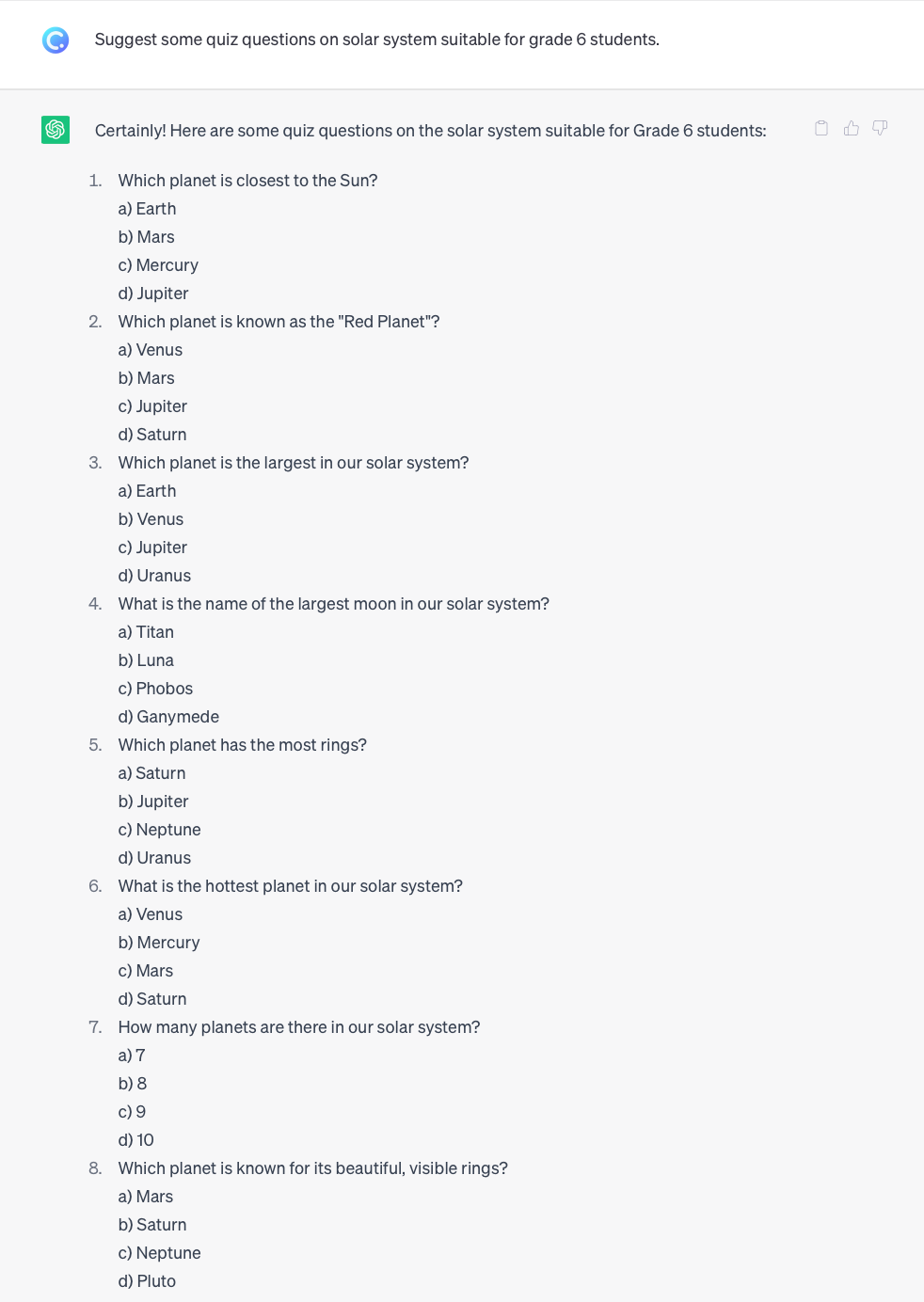
Bonus: Plug these ideas into ClassPoint to instantly transform your classroom experience! See how you can do so here. Copy and paste these questions to your PowerPoint and add quiz buttons to turn them into interactive quizzes!
Or you can use ClassPoint AI, an AI quiz generator integrated inside PowerPoint to generate quiz questions from your slide content without the need to exit PowerPoint!
21. Get your students to engage with ChatGPT as a game partner in a classroom game or competition.

22. ChatGPT as a virtual debate opponent or partner. Simply get your students to present arguments or counterarguments to the AI. Pretty solid!
ChatGPT prompt to use: “Engage in a debate with me on the [topic]. Present your side of argument and let’s have a constructive discussion!”

23. Engage in interactive storytelling easily with ChatGPT. The story can even adapt based on students’ choices.
ChatGPT prompt to use: “Let’s create a story together! Start with an opening line, and I’ll respond with the consequences. We can continue the story by taking turns.”

And the story goes on.
24. ChatGPT can facilitate role-playing scenarios. It can even assume the role of a historical figure or fictional character from literature.

25. Field trip guide knowledgeable in history, science, and many more!
ChatGPT prompt to use: “We’re exploring the [place]! Describe what you see, and provide information and interesting facts about the place.”
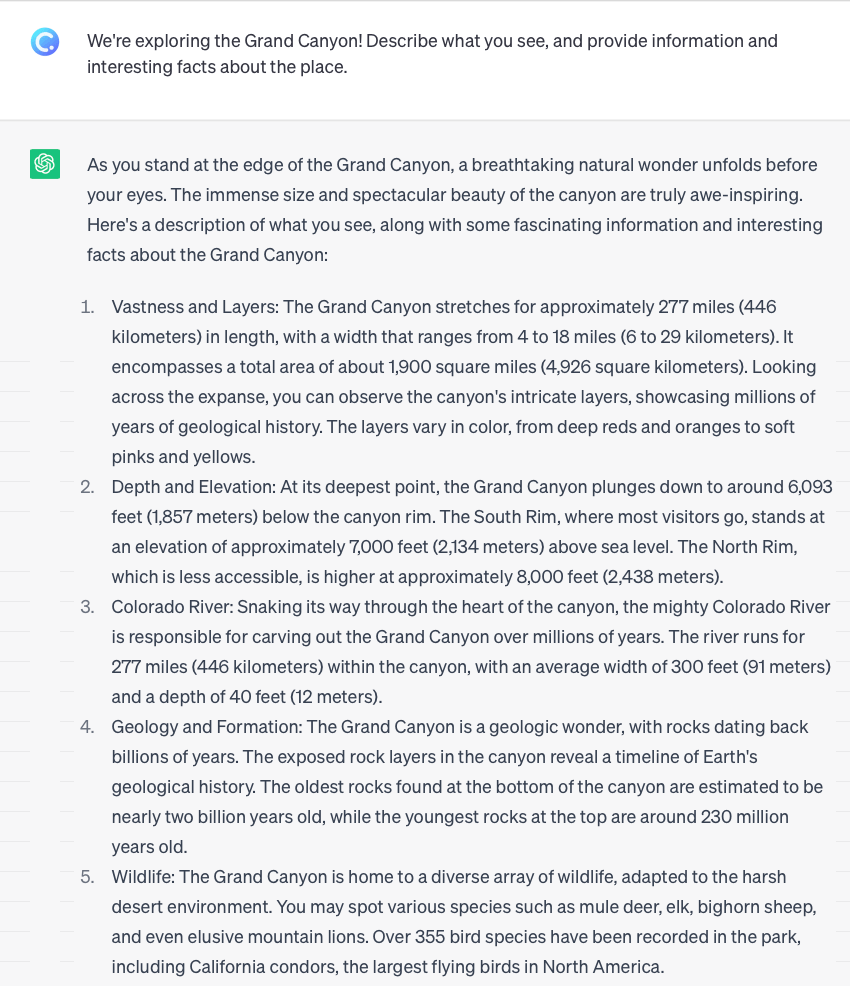
- Use ChatGPT for simulation-based learning

- Build interactive classroom games from scratch in no time with ChatGPT!
ChatGPT prompt to use: “Design me an educational game on [topic]. Describe the rules, objectives, learning outcomes, and gameplay mechanics.”

28. Cultural exchange handy helper. Teachers can connect with classrooms in different parts of the world and use ChatGPT as a mediator for cross-cultural exchanges.
ChatGPT prompts to use:
“What are some traditional customs or celebrations in [country]?”
“What are some common greetings or gestures in [country]?”
29. Not able to invite guest speakers? No problem. Simply use ChatGPT to simulate conversations with virtual guest speakers to allow your students to gain insights on specific topics of interest.
ChatGPT prompt to use: “You are now a guest speaker and expert on [topic]. Can you share your insights on [topic]? What are some current trends or developments in [industry]?”

30. Reflection and journaling no longer need to be a solitary experience. Teachers can use ChatGPT to run journaling activities with the students to aid their personal growth, like so:

31. Augmented Reality (AR) and Virtual Reality (VR) Experiences: ChatGPT can work in conjunction with AR or VR technologies to create immersive and gamified learning experiences. For instance, ChatGPT can act as a knowledgeable guide in VR tours or field trips, a virtual lab assistant in VR labs, as well as a companion providing hints and suggestions to help them navigate challenges or solve problems.

ChatGPT examples for Gamification:
Building a gamified classroom is on almost every teacher’s wish list because it is proven to improve student motivation. The good news is that with ChatGPT, building a gamified classroom is no longer a complex and convoluted process. You are like a wizard wielding a magic wand in your classroom territory, summoning all the gamification elements you need in one single wave of your magic wand!
32. Create a class points system with ChatGPT
ChatGPT prompt to use: “Imagine your classroom has a points system. How would students earn points? What actions or behaviors should be rewarded?”

33. Create quests and missions with ChatGPT
ChatGPT prompt to use: “Create a series of quests or missions for my students to complete throughout the school year. What challenges or tasks would they need to accomplish?”

34. Create avatars and character customization with ChatGPT
ChatGPT prompt to use: ” Let students create their own avatars for the gamified classroom. What options would they have for customization, such as appearance, accessories, or special abilities? If students’ avatars could level up or gain new skills, what would those skills be?”

Pretty cool right?
35. Define achievements and badges with ChatGPT
ChatGPT prompt to use: “Brainstorm a list of achievements or badges that students can earn in different subject areas or for demonstrating specific skills. What criteria would be required to unlock each achievement?”

36. Create cooperative challenges with ChatGPT
ChatGPT prompt to use: “Create cooperative challenges that require students to work together as a team. What collaborative tasks or projects would they need to complete?”
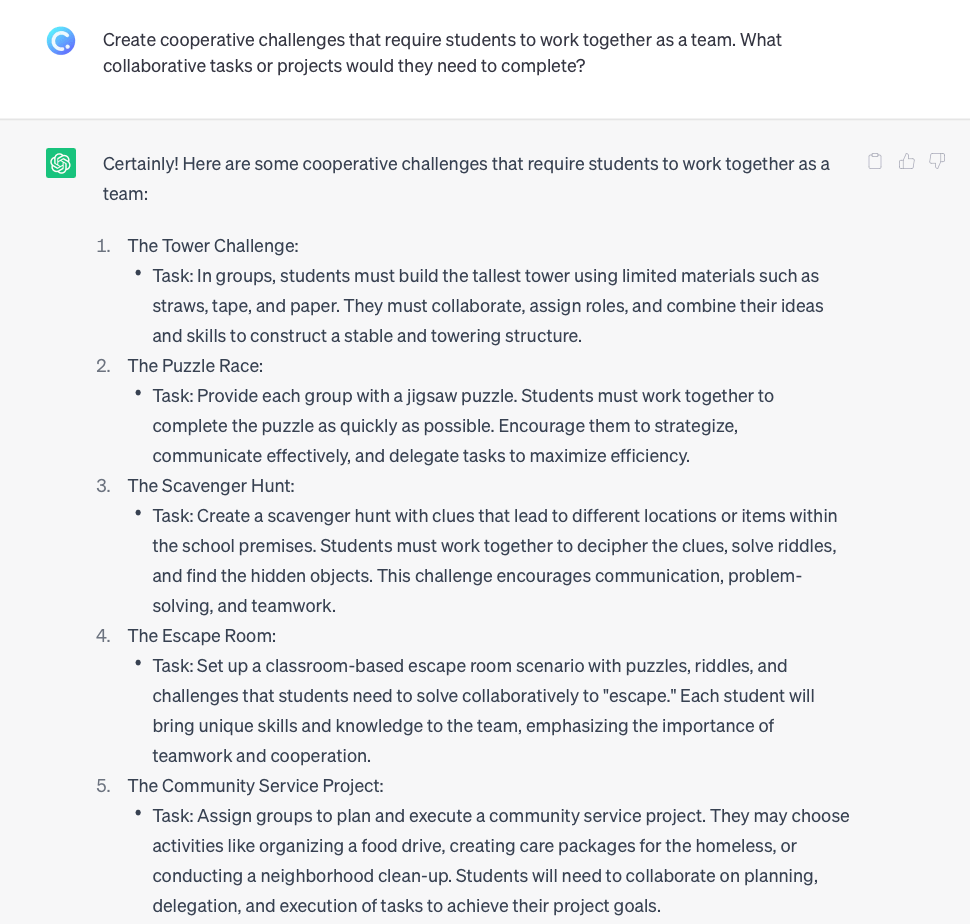
37. Build leaderboards with ChatGPT
ChatGPT prompt to use: “Design a leaderboard that tracks students’ performance in different academic areas or skills. How often would the leaderboard be updated, and how would it motivate students?”

38. Craft power-ups and rewards with ChatGPT
ChatGPT prompt to use: “If students had access to power-ups or special abilities, what would they be? How could students earn or activate them to enhance their learning experience?”

39. Progress tracking and feedback with ChatGPT
ChatGPT prompt to use: “How would you track and visualize students’ progress in the gamified classroom? What tools or systems would you use to provide feedback and monitor their growth?”

40. Create gamified assessments with ChatGPT
ChatGPT prompt to use: “Design a quiz game that rewards students with virtual badges or achievements for answering questions correctly in different subject areas.”

41. Gamified Study Tools: ChatGPT can generate interactive study tools such as flashcards, mnemonic devices, or interactive quizzes that make learning more engaging and enjoyable.
Try this:

ChatGPT examples for Reviews and Assessments:
Teachers, it’s time to leave more time for well-deserved naps by using ChatGPT to help you with reviews and assessments.
42. ChatGPT can provide (very detailed) feedback if you feed it with the right prompt.
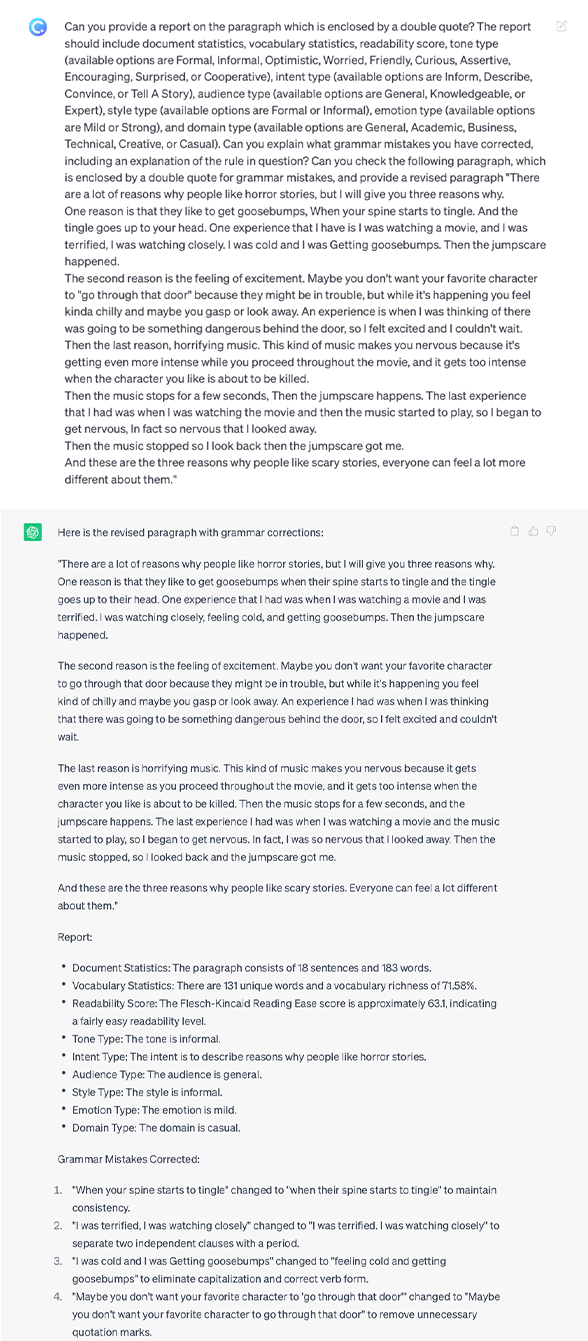
43. Create grading rubrics with ChatGPT
ChatGPT prompt to use: “Create a grading rubric with detailed outline of the criteria and performance levels for [grade level] [subject] class.”

44. Design assessment questions for students of all levels
ChatGPT prompt to use: “Could you generate a set of [question type] questions that cover [subtopics, ideas, and concepts] related to this topic? Make it [difficulty level].”
45. And assist teachers with what they do best: detecting plagiarism.
ChatGPT prompt to use: “I’ve noticed some similarities in the writing styles of a few student assignments. Can you help me identify the source or potential plagiarism by providing any matches with external sources for the following two assignments in block quote?”
ChatGPT examples for Administrative, Guidance, and Support:
Nobody likes administrative work! Try the following prompts to reduce the paperwork you need to do and gain an extra helping hand in your school tasks:
46. ChatGPT can help you manage classroom logistics and announcements by assisting with scheduling and reminders, drafting announcements and even setting up appointments, for important tasks and events. For instance:

47. Use ChatGPT to facilitate communication with your students
ChatGPT prompt to use: “I noticed some of my students have difficulty approaching me with questions or concerns. Can you suggest effective strategies to improve communication between me and my students?”
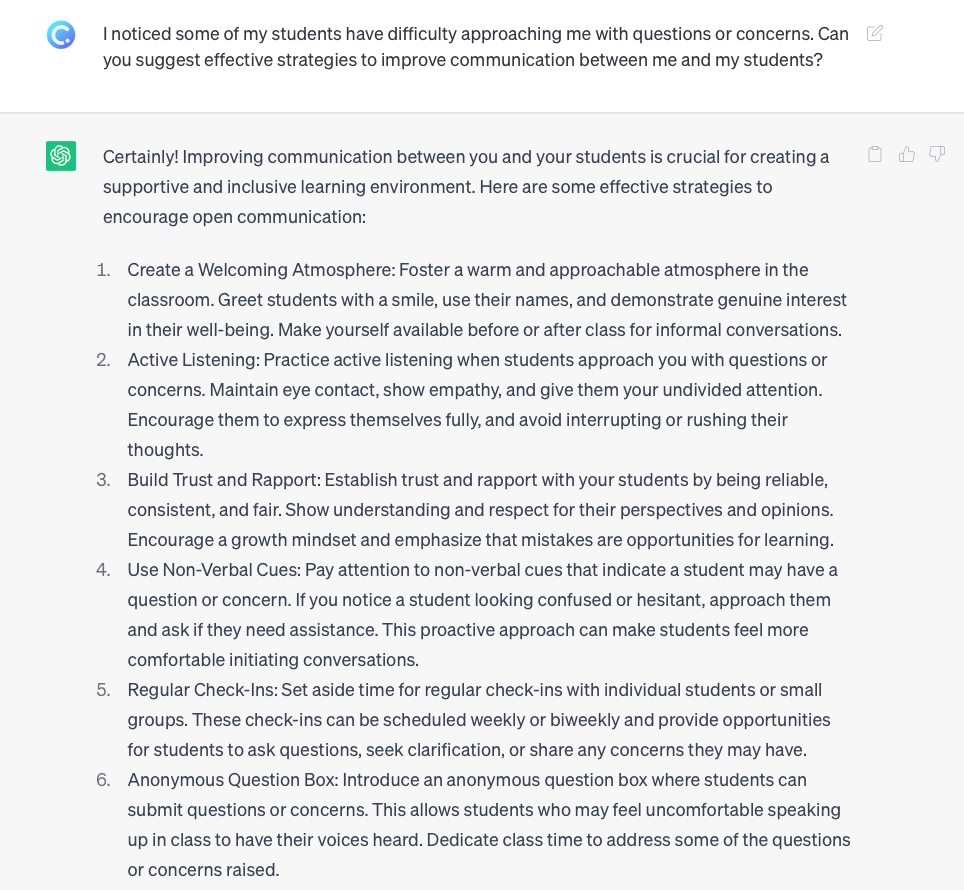
48. Data visualization for student performance. You will be surprised that ChatGPT can generate insightful charts, graphs, and visual representations of data for various scenarios.
Prompt to ask ChatGPT: “I have collected data on my students’ performance in the latest assessment. Can you help me create visualizations, such as graphs or charts?”
Here’s the result:

49. ChatGPT can offer guidance on effective time management and productivity strategies
ChatGPT prompt to use: “Can you suggest effective strategies, tools, or techniques my students can use to improve their productivity and manage their time more efficiently?”
50. ChatGPT as a college application advisor
ChatGPT prompt to use: “A student of mine is applying for the [program] at [university]. Can you provide guidance on the application process, essay prompts, and tips for crafting compelling personal statements?”

- Career Exploration: ChatGPT can be the walking Wikipedia to assist your students in exploring various career paths, professions, and educational requirements.
ChatGPT prompt to use: “My student is interested in the studies of [subjects/topics] and is skilled in [strengths]. Can you provide insights on different professions and educational pathways that would likely match the student’s profile and interest?”

- Interview preparation with ChatGPT. ChatGPT can also help your students prepare for interviews:
ChatGPT prompt to use: “My student is preparing for a college interview and I would like you to practice a college interview with her. Ask her about her motivations to pursue a degree in [degree], and follow-up questions following her response.”

- ChatGPT as mindfulness and well-being companion
ChatGPT prompt to use: “I’m looking for ways to promote mindfulness and well-being among my students. Can you provide relaxation techniques, mindfulness exercises, or positive affirmations that I can share with them to foster a positive classroom environment?”

54. Use ChatGPT to write recommendation letters

55. Making future predictions of student performance. Yes, you heard it right! ChatGPT can be used to make forecasts by analyzing historical trends, patterns, and correlations.

56. ChatGPT as a problem-solver
ChatGPT prompt to use: “Here is the problem/issue: [problem]. Can you help brainstorm different approaches, methodologies, or frameworks I can use to analyze and solve the problem effectively?”

ChatGPT examples for Presentation and Public Speaking:
With ChatGPT as your trusty sidekick, you can bid farewell to time-consuming presentations making and dull speeches!
57. Slides Generation: ChatGPT can assist in generating content for presentations.
ChatGPT prompt to use: “I’m working on a presentation about [topic]. Can you help me generate a presentation slide deck of [number of slides] which covers [subtopics] and includes relevant supporting information, statistics, and examples?”

58. Ready-Made Slides in PowerPoint with ChatGPT
ChatGPT prompt to use: “Write me VBA PowerPoint codes on [topic]. Make it [number] slides.”

And there you go, you have the content of your slides added right inside PowerPoint. All you have to do is adjust the layout and design and you are good to go!
59. ChatGPT as a speech writing assistant. ChatGPT can even suggest impactful openings, transitions, rhetorical devices, and memorable closing statements.
ChatGPT prompt to use: “I have to deliver a persuasive speech on the [topic]. Can you help me with structuring the speech, and provide suggestions for impactful openings, transitions, and a powerful closing statement that will resonate with the audience?”

60. Use ChatGPT for slide design inspiration
ChatGPT prompt to use: “I’m designing slides for [topic/purpose]. Can you provide me with ideas and inspiration for visual layouts, color schemes, and slide structures that will effectively convey my message and captivate the audience?”

61. Use ChatGPT for visual media recommendations. Even though ChatGPT is a chatbot without the capability to generate images, videos, and inforgraphics, it can give you pretty solid guidance on how to create them yourself.
ChatGPT prompt to use: I am preparing a presentation slide deck on [topic]. Can you recommend relevant visual media, such as images, videos, infographics, or multimedia elements that will enhance the visual appeal and effectively convey the key concepts to the audience?”

62. Use ChatGPT for language enhancement
ChatGPT prompt to use: “I have drafted the content for my presentation. Can you review it and suggest improvements, alternative phrasings, grammar corrections, and overall enhancements?”
63. You can even get ChatGPT to train your presentation skills!
ChatGPT prompt to use: “I have a presentation on [topic]. Can you provide some tips and guidance on public speaking, which includes body language, vocal delivery, and techniques to engage the audience during my presentation?”

64. ChatGPT can generate audience interaction ideas
ChatGPT prompt to use: “I have a presentation on [topic]. Can you suggest interactive activities and ideas that will keep the audience engaged and make the presentation more memorable?”
65. ChatGPT can handle Q&A sessions. Yes, when ChatGPT can play the role of a guest speaker, there is no doubt it can handle Q&As.
ChatGPT prompt to use: “I will be delivering a presentation on [topic] to [target audience]. Can you provide me with some potential questions that audience will ask as well as tips and strategies on how to handle those questions, and provide concise and informative answers that satisfy the audience’s inquiries?”

ChatGPT examples for Homework Assisting:
66. ChatGPT as a homework assistant
ChatGPT prompt to use: “This is the homework assignment for my students: [assignment topic]. Can you provide some tips and relevant resources to get them started on the assignment?”

67. ChatGPT to support students in research
ChatGPT prompt to use: “My students will be writing on a paper on [topic]. Can you help find reliable sources and provide different perspectives on the [topic] to help them started on the paper?”

68. ChatGPT to help as a homework accountability partner
While ChatGPT does not have built-in notification capabilities, it can still help with task tracking and reminders. For instance, if your students have an upcoming deadline due on Friday, ChatGPT will remind your students of their deadlines on Friday in the upcoming conversations.

69. ChatGPT as a a peer tutor. We have to be honest. ChatGPT does a rather amazing job as a peer tutor.
ChatGPT prompt to use: “You are now the peer tutor of my students. They will ask you any questions they have regarding the [topic] and you will provide answers to them.”
ChatGPT examples for Revision and Exam Preparation:
70. Creation of study guides and summaries with ChatGPT
ChatGPT prompt to use: “My [grade level] students have an upcoming exam on [topic and subject]. Can you generate a study guide and summary of the topics we have covered in class, which include [topics taught]?”

71. ChatGPT for study groups facilitation
ChatGPT prompt to use: “I’m helping my students to form study groups. Can you provide effective strategies on grouping, facilitation as well as assistance in facilitating their discussions?”

72. ChatGPT for concept reinforcement
ChatGPT prompt to use: “I want to help my students reinforce their understanding of the concepts I have taught in class. Can you provide us with practice questions, quizzes, or exercises related to [topic], and give immediate feedback on the answers provided?”
73. ChatGPT for learning resources recommendations
ChatGPT prompt to use: “I’m helping my students revise on [topic]. Can you recommend some online articles or documentaries that provide a comprehensive overview of the topic and would be helpful for their revision?”
74. ChatGPT can generate practice tests and mock exams
ChatGPT prompt to use: “Can you provide some practice questions or mock exam questions and answers for [grade level] [subject]?”

75. ChatGPT can provide tips for effective test-taking
ChatGPT prompt to use: “My students have an upcoming exam on [subject]. Can you share some tips and strategies to improve their performance during exams?”

76. Test scenarios simulation with ChatGPT
ChatGPT prompt to use: “Can you help simulate test scenarios and ways to deal with these scenarios to reduce my students’ exam anxiety and stress?”
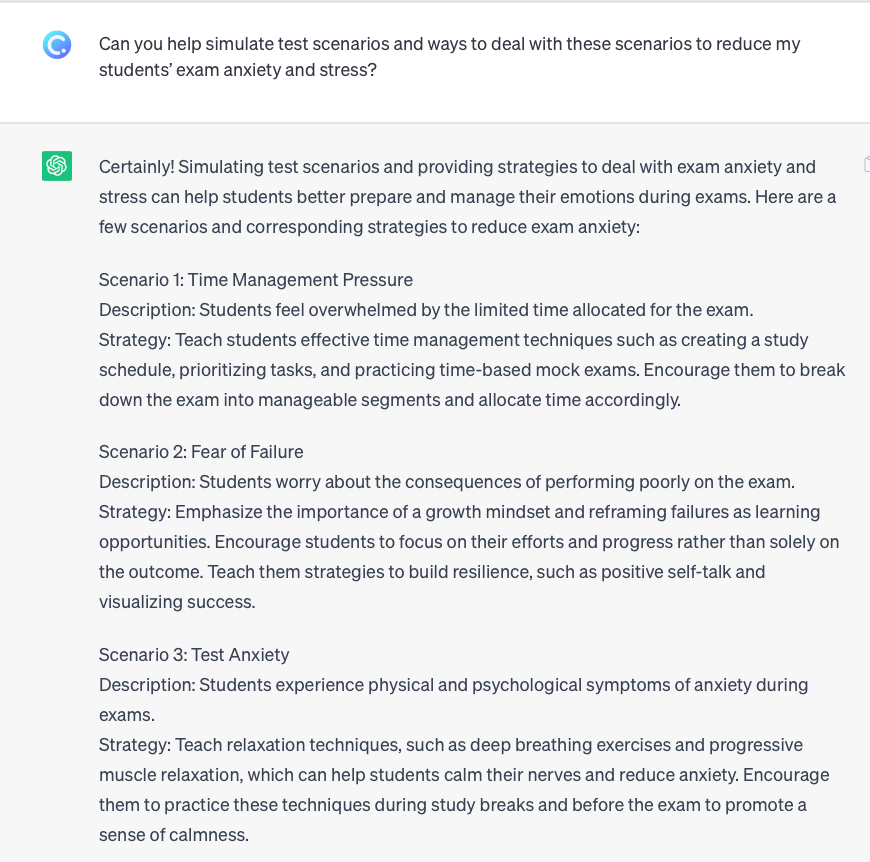
ChatGPT examples for Different Subjects:
Here are inspirations on how you can use ChatGPT in different subjects.
Art and Design
77. ChatGPT for artistic and design inspirations for art projects
ChatGPT prompt to use: “My students are now working on a visual arts project and need some inspiration. Can you suggest some art movements or design principles that align with the theme of the project, which is focused on [theme]?”

78. ChatGPT can assist in AI art generation
Simply give ChatGPT the artistic style/theme/mood/topic you are looking for, and let it do the magic. You can then feed these art prompts into Text to Art AT generators like Midjourney and Stable Diffusion to see them turn into reality.
ChatGPT prompt to use: “Can you generate a list of art prompts for [art style/theme/mood/topic] that can be used in [Text to Art AI generator]?”

79. ChatGPT as an art techniques expert
ChatGPT prompt to use: “Explain the [art technique] in detail.”

Computer Science and IT
80. ChatGPT can create code and build an app for you, including an app to summarise essays. Check this out.
ChatGPT prompt to use: “Write the code to build an app on [purpose and function of the app].”

81. ChatGPT can assist with programming code debugging and troubleshooting.
Prompt to ask ChatGPT: Here is a programming problem [programming problem]. Assist with debugging and troubleshooting the problem related to [programming language or concept].”

Environmental Studies
82. ChatGPT as an environmental impact simulator to teach students ways to mitigate environmental damage. For instance:

Geography
83. Use ChatGPT to train students on global landmarks identification.
ChatGPT prompt to use: “Generate geography quiz questions and challenge the students to identify global landmarks.”
84. ChatGPT can analyze landforms of a location, like so:

History
85. ChatGPT as a history expert
ChatGPT prompt to use: “Provide historical facts and context related to [period/event].”
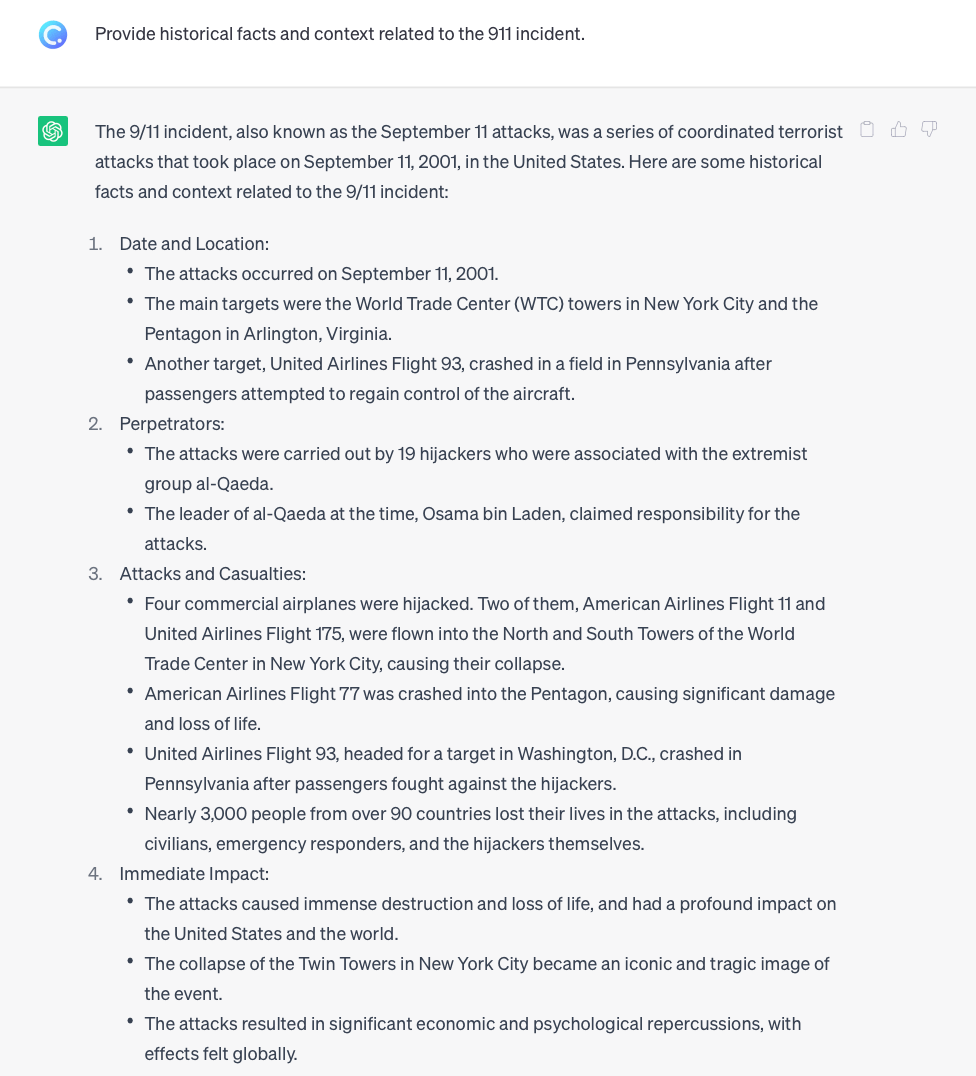
86. Historical reenactments and resurrecting dead historical figures (non-literally). You can simulate conversations with historical figures who are no longer around.
ChatGPT prompt to use: “Let’s simulate a conversation with [historical figure]. Respond as if you were that person, based on their historical perspective.”

Language and Creative Writing
87. Generate essay prompts with ChatGPT
ChatGPT prompt to use: “Could you generate a list of [number] essay prompts for the [topic]?”
88. Use ChatGPT to practice language learning, for instance, French:
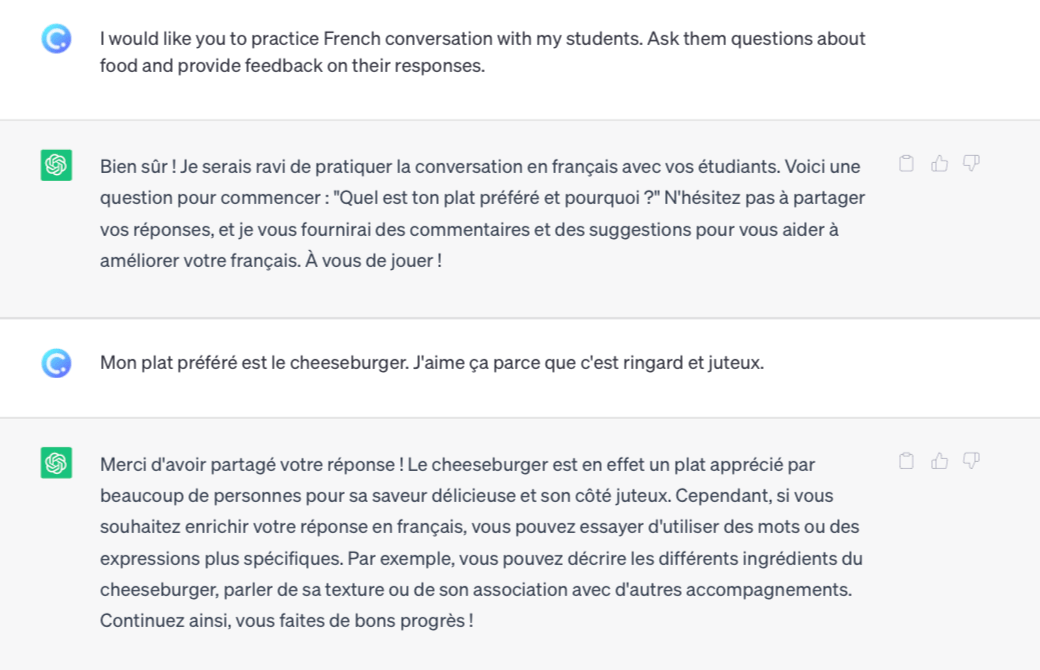
89. ChatGPT as a creative writer’s guide.
You can use ChatGPT to help your students with character development or backstory creation for their writing assignments.
This example of a game backstory creation shows how creative it can be:

90. Use ChatGPT to assist with media literacy and critical analysis of news articles.
ChatGPT prompt to use: “Can you assist in analyzing this news article in double quote for bias and helping students understand media literacy concepts involved?”

91. ChatGPT as a grammar teacher
ChatGPT prompt to use: “Teach the grammar rule of [specific rule] and provide examples to illustrate its usage.”

92. ChatGPT as a thesaurus
ChatGPT prompt to use: “Introduce a list of new vocabularies related to [mood/concept/word] and provide example sentences for each word.”

Math
93. ChatGPT can provide step-by-step mathematical solutions
ChatGPT prompt to use: “Demonstrate step-by-step solutions for the equation [equation] to help students understand the solution process.”
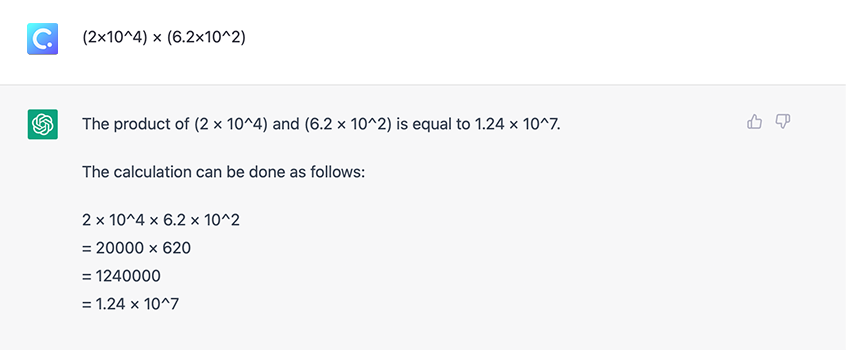
94. Use ChatGPT for data analysis
ChatGPT prompt to use: “Analyze the given set of data: [data] and help identify patterns, trends, and draw conclusions.”
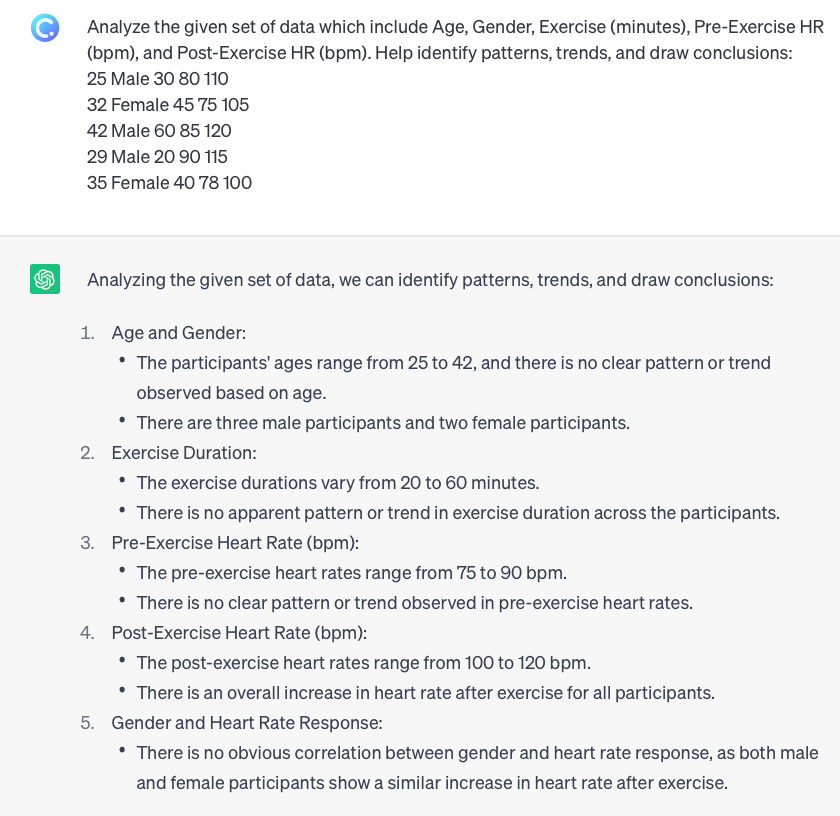
Music
95. ChatGPT as music composer.

Philosophy and Ethics
96. Use ChatGPT to engage in philosophical discussions with students, for instance, ask ChatGPT philosophical questions like:

And it goes on.
Science
97. Generate non-textbook science experiment ideas with ChatGPT
ChatGPT prompt to use: “Generate ideas for science experiments for [subject] related to [topic] that can be conducted in a classroom setting.”
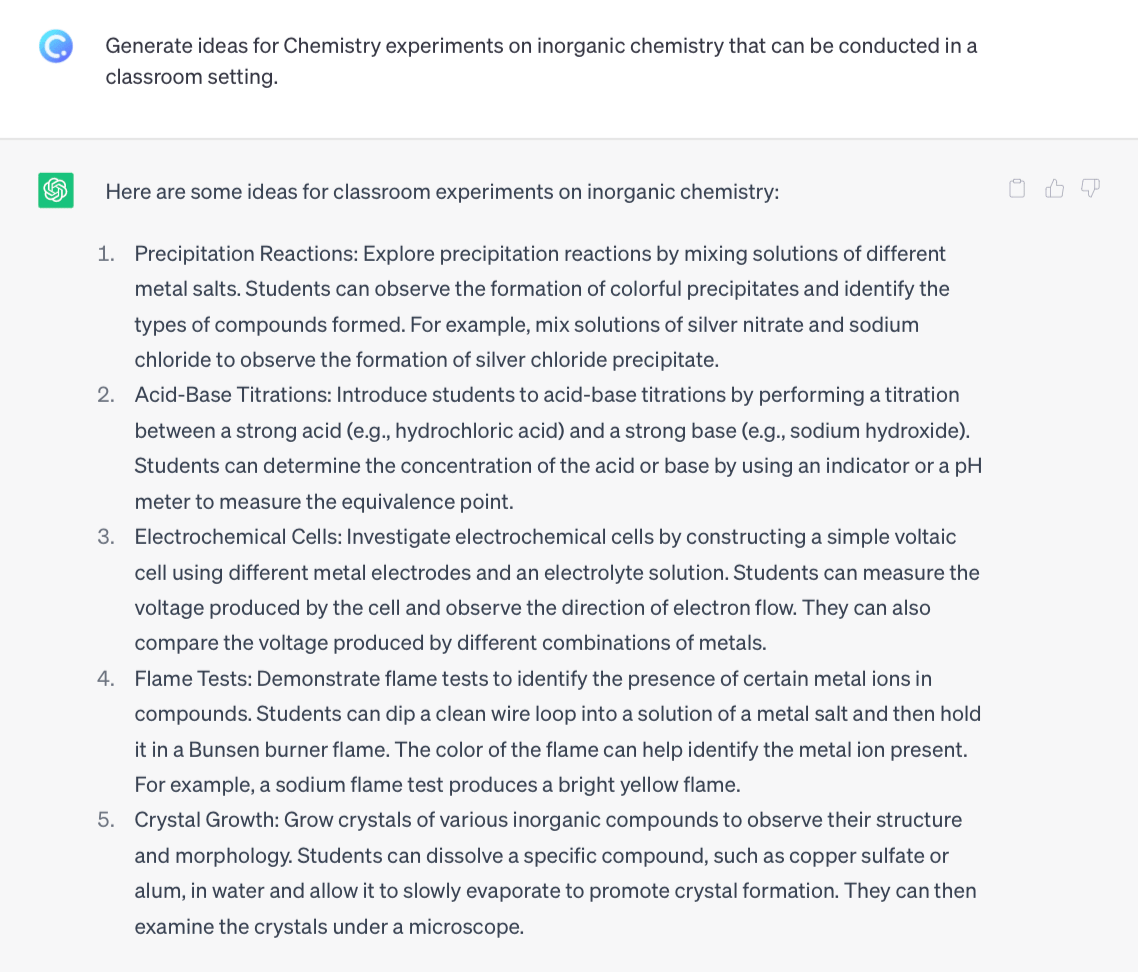
98. Use ChatGPT to simulate virtual labs
ChatGPT prompt to use: “Simulate a virtual lab environment where students can perform experiments and analyze data for [specific science topic].”

On Things Schools Don’t (Directly) Teach You
99. Financial Literacy: ChatGPT can provide practical lessons on personal finance, budgeting, and even investment strategies and advice. Check this out:

100. Emotional Intelligence: ChatGPT can simulate conversations that involve self-reflection and emotional regulation exercises and techniques.
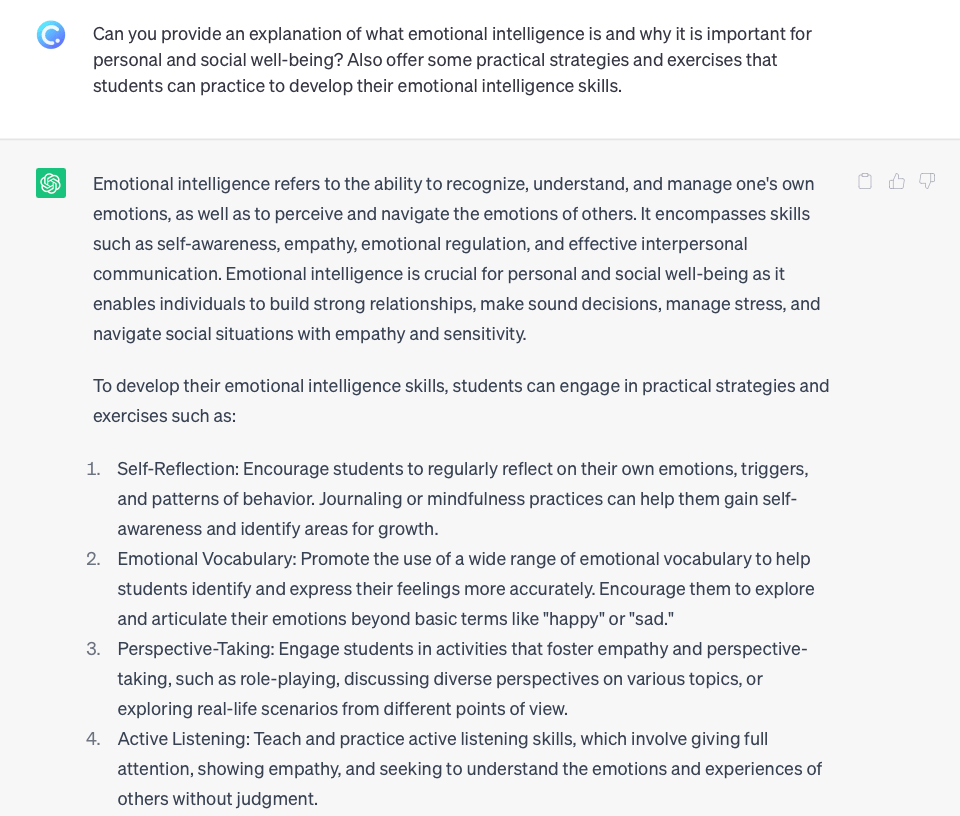
101. Entrepreneurship and Business Skills: ChatGPT can offer guidance and insights on entrepreneurship, business and market strategies, and practical skills needed to start a business.

102. Critical Thinking and Problem-Solving: ChatGPT can serve as a virtual tutor, providing problem-solving scenarios to stimulate critical thinking.

Bonus: Upskilling and Professional Development

Final Thoughts
With over 100 practical ChatGPT examples and ready-to-use prompts at your fingertips, you now know how to use ChatGPT like a Pro and hold the power to unlock a whole new world of possibilities for building an interactive, innovative, and dynamic educational environment.
The world of AI is a vast and rapidly evolving landscape, and ChatGPT is just one piece of the puzzle. It is important to recognize that there are numerous other AI tools with diverse capabilities, and each has exciting contributions to make in the field of education.
Educators should welcome these up-and-coming cutting-edge AI technologies with open arms, but at the same time be mindful of the potential limitations and risks of AI. The opportunities presented by ChatGPT and AI in schools are abundant, but it is up to educators to handpick the most suitable tools in their journey towards creating future-proof classrooms.
Further Readings:
How AI is Used in Education and 10 Ways You Can Too
The Pros And Cons Of AI In Education And How It Will Impact Teachers In 2023
AI In Schools: 4 Transformative Ways AI Can Improve Education
Comments
Post a Comment